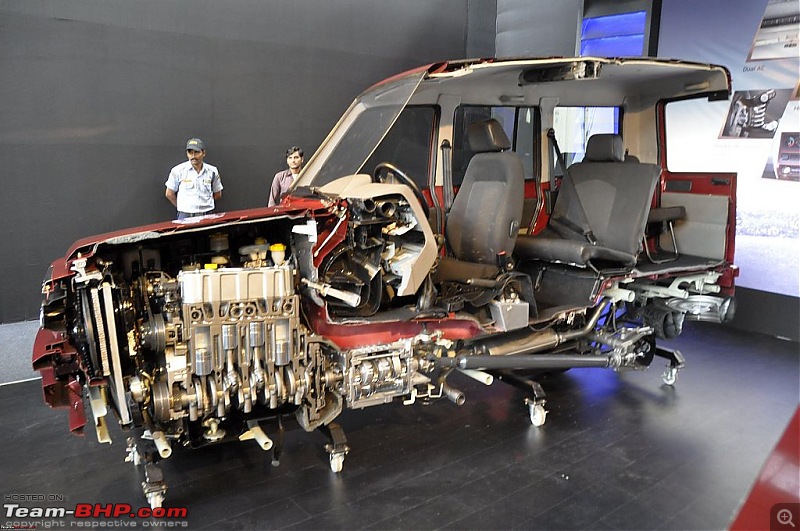Quote:
Originally Posted by Equus  The Vista should never have been named Indica in the first place. Such a fantastic car, and never got the recognition it deserved. |
Quote:
Originally Posted by simplyself  Yes, the Vista shouldnt have named Indica. And the car's rear too did a lot to keep it from attaining full potential of market for such a good car.
. |
To be honest, it is not about how their cars looked, the way annoying niggles kept cropping up or the lousy service centres; the biggest blow to TATA was that post-2005, it NEVER had the products that the market ACTUALLY wanted.
1. 2008. The Nano is introduced to immense fanfare, albeit in smaller numbers due to the plant issue. Bookings go off the roof, TATA showrooms are packed to the brim and the salesmen are having a field day. What no one is noticing is that the max. bookings come from people who want to have the NANO as a second car, with first-timers forming a very small number. Two families from my own colony brought the Nano home, both as a second car. And that is where Ratan Tata (with due respect to his vision and ideas) went wrong. The Nano, for all its revolutionary features, simply did not meet the common man's needs. It looked too odd for a car, it was rear-engined and drove the rear wheels (something unheard of among the masses), it had different-sized tyres and what not. A common man with a limited salary could not afford taking a risk on a car which was simply too unconventional for his tasks.
TATA, being an Indian company, should have realized that us Indians do not like taking risks. That is the reason why reliable, albeit boring Japanese cars continue to sell in large numbers, despite having little or no safety features to protect the occupants from injury. And I haven't talked about those burning Nanos yet.
Another thing that pains my heart is: having realized that the primary target (the 1st time car buyer) is not buying the car, TATA made little efforts to focus on those looking for a city runabout. It is only this year when finally, a basic necessity such as a glove-box is introduced and a power steering option continues to be inconspicuous. Also, why has it taken TATA so many years to come up with a diesel engine?? TATAs have always been synonymous with diesel engines and IMHO, the company should have started working on a diesel engine along with the car.
2. Same year. The Vista was launched. Many people have complained that it looked similar to the previous gen Indica, it continued to have quality issues and what not. But what no one noticed was that it was a product that no one ASPIRED to own. The Indica nameplate had been firmly planted in the Indian mindset as a
taxiwallah's car; as a result, it never came into discussion among the car-buying junta. If one looks closely, a majority of the Indica's sales continued to come from the taxi segment; now that the taxi guys have better, cheap and reliable options to choose, Indica sales have gone on a free fall.
What I simply fail to understand is: despite having the home advantage, why is TATA having to struggle? Is it so difficult to understand the needs and wants of the Indian customer, or are we just one of those kinds who are simply unpredictable? All major car companies are almost at the top of their game in their home countries. This is true, not just for cars but for all major consumer products. In such a short span of time, Micromax and Karbonn have grown by leap and bounds and are now, rubbing shoulders with the biggies. This is mainly because they offer exactly what an average Indian customer looks for in a smartphone, high-end specs at a cheap price point. Is that so hard to get, TATA?? Even Mahindra, which has had to face almost the same challenges as you, has grown.
What TATA needs at the end of the day is a product that is true to its philiosphy of maximum space at minimum price, but with all the negatives that TATAs are known for ironed out. The brand TATA continues to have significant respect among the Indian population and that alone may help the company rise to its former glory.
Coming back to the Advanced Modular Platform, even though the idea behind the concept itself is brilliant, what TATA must realize is that all major companies adopting similar platforms build a very large number of cars of different types over different countries to make it successful. TATA has a very limited number of body designs to work upon, what it should ask itself is: will it be profitable in the long run? Setting up a platform of such magnitude and proportions requires a dedicated strategy and needs significant time and money to develop. What remains to be seen is whether TATA is upto it or not?? Only time will tell.


 (8)
Thanks
(8)
Thanks
 (3)
Thanks
(3)
Thanks
 (1)
Thanks
(1)
Thanks
 (17)
Thanks
(17)
Thanks
 (6)
Thanks
(6)
Thanks
 (1)
Thanks
(1)
Thanks
 (1)
Thanks
(1)
Thanks








